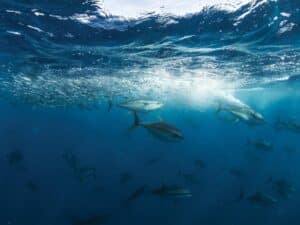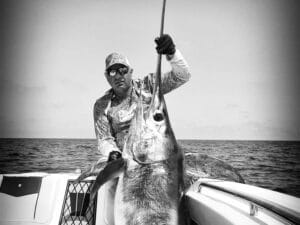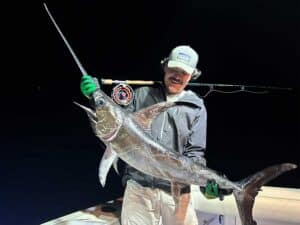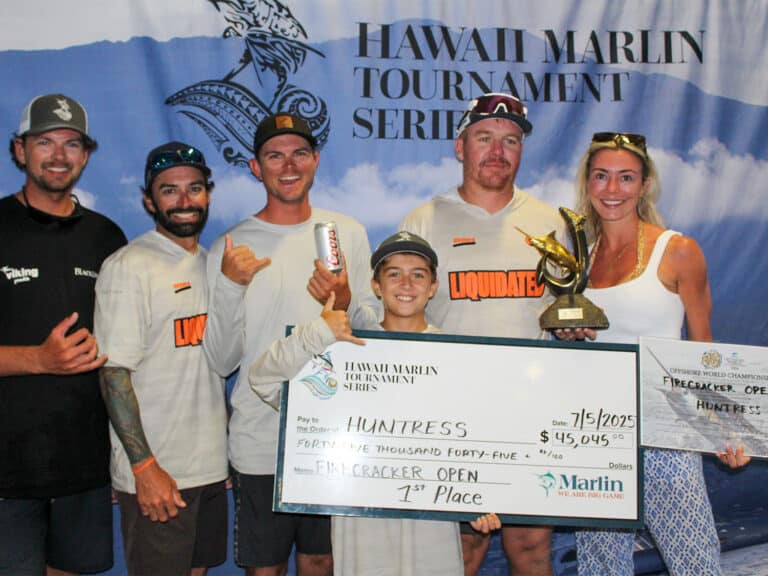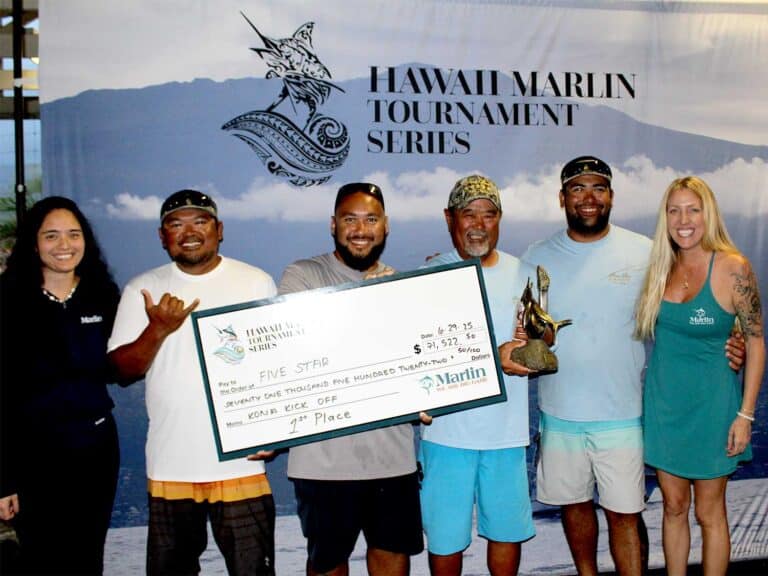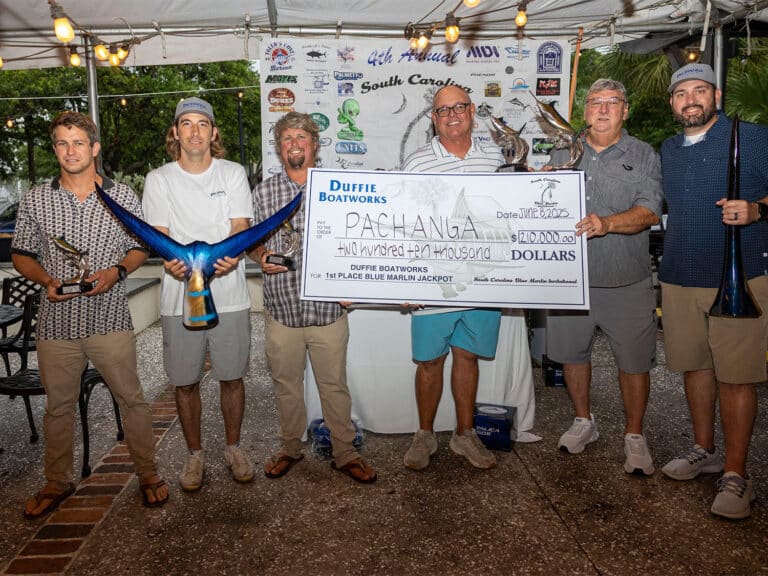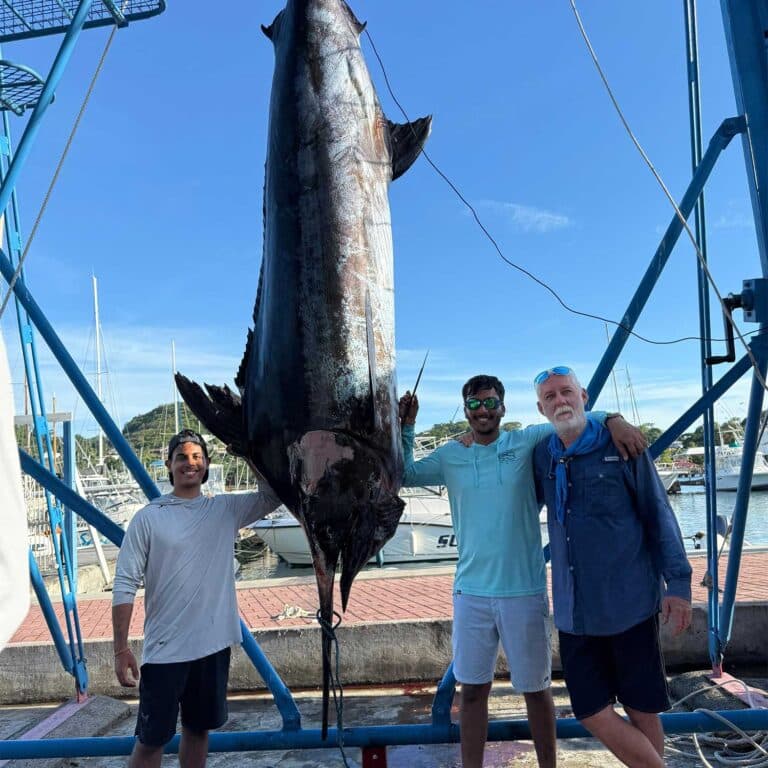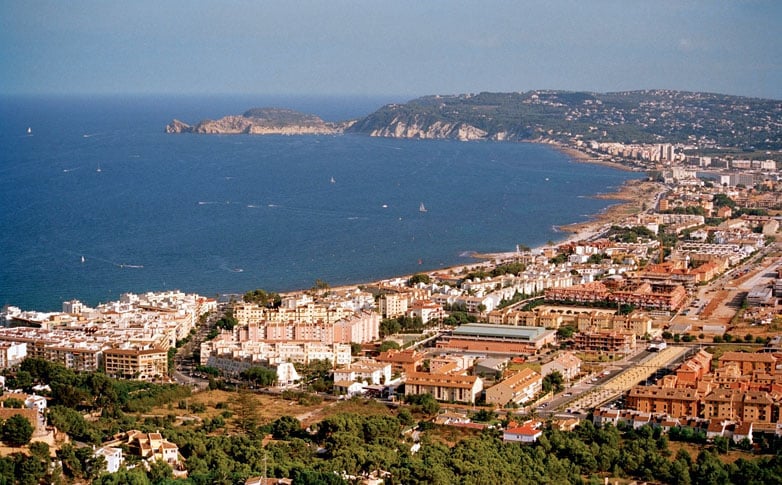
With a resounding crack, the line popped free from the release clip at the head of the port outrigger, and for a brief moment, a bow of slack line hung in the air until it snapped taught to the staccato burst of a noisy ratchet as line ripped from the reel. I stepped forward to grab the rod, catching a fleeting glimpse of a golden fish as it sprinted in the opposite direction of our wake. By the time I reached the transom, three more rods were bending and bouncing as three more golden fish cartwheeled above the ocean — a quadruple header of dorado.
Typically, European sport fishermen have to travel to faraway destinations to catch game fish such as dorado, but the fish we were fighting were hooked only hours away from several European airports.
Jávea, pronounced havea and occasionally spelled Xàbia, is an idyllic, traditional fishing village tucked away in a sheltered bay to the south of Spain’s Cap de Sant Antoni, which protrudes into the Mediterranean about halfway between Alicante and Valencia. Prior to this trip, I had never heard of Jávea and was under the impression that sport fishing off the Spanish Mediterranean coast was a long shot at best. How very wrong I was.
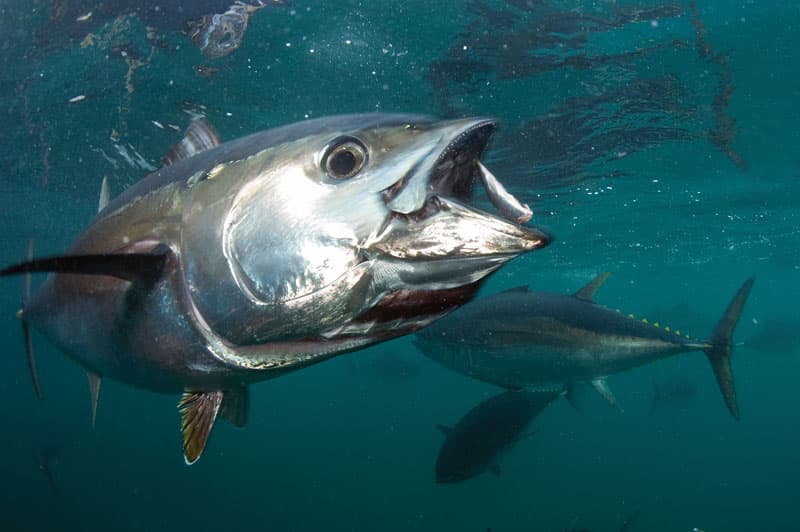
My day started at Club Nautico de Javea, where I met Dani Maestre, owner/skipper of the 35-foot Beneteau Antares that I would be fishing aboard for the next two days. After a short run from the marina, we stopped in 60 feet of water. Maestre handed us rods rigged with small sabikis, and we immediately began pulling small scad and various other species aboard to use for bait. With a couple dozen lively baits swimming in the well, Maestre made another short move and switched sabikis for squid jigs, so we could add cuttlefish to the bait box.
The bluefin tuna is one of the largest, most sought after and immensely powerful species of game fish. Bluefin is one of only a handful of species that can reach and top the 1,000-pound mark. Bluefin tuna are not the easiest fish in the sea to catch, but if you know where and when to fish for these maritime leviathans, your chances of success can drastically increase. And if you time it right, Jávea has the potential to produce a trophy.
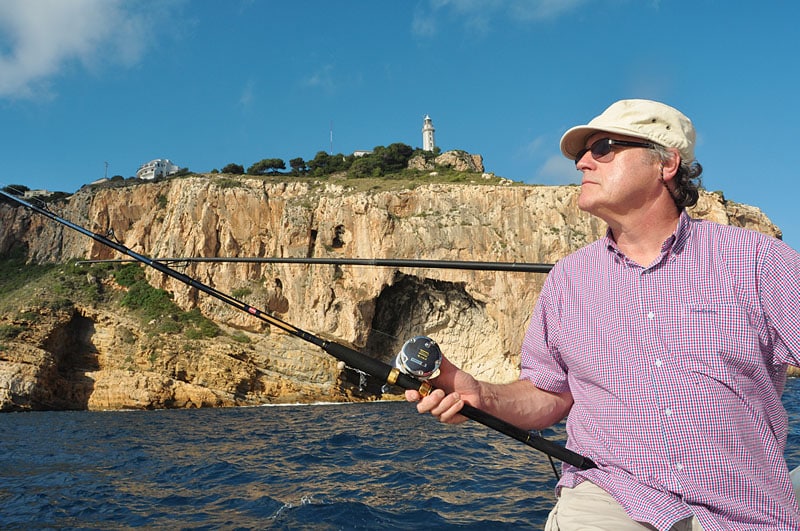
“The main tuna season here runs from May through early August, and this past summer, the fishing was excellent,” Maestre says. “We caught several tuna over 600 pounds and lost several larger fish. If anything, in recent years the average size of tuna has increased. Mostly, this is a strictly enforced catch-and-release fishery for fish averaging 40 to 120 pounds, but each July, we have two weeks when we can harvest one fish per boat per day. We typically troll lures until we locate the fish, then switch to drifting with live baits.”
Obviously, the opportunity to tussle with a giant bluefin is a huge attraction for any port, but bluefin are not the only premier species caught off Jávea. With very few exceptions, there is nowhere in the world where the various species of spearfish are abundant, but they remain one of the most sought after billfish — especially for those looking to catch the highly coveted International Game Fish Association Billfish Royal Slam. The Mediterranean spearfish is a subspecies of the Atlantic longbill spearfish and is rarely targeted in the waters off Jávea, yet each year during the summer months (tuna season), boats fishing these waters catch spearfish. Maestre told me that during one bumper season a few years back, boats recorded as many as 10 strikes a day from these elusive billfish.
In addition to dorado, tuna and spearfish, commercial longline fleets catch a lot of swordfish throughout the Mediterranean, which leads me to believe the opportunity for Florida-style deep dropping here during the daytime for swords could be outstanding.
I fished Jávea during mid October, which was too late for bluefin, but it was prime time for dorado. Trolling a varied selection of brightly colored surface lures alongside diving plugs, our first strike came less than 10 minutes after setting our spread. Even though it wasn’t exactly tuna time, we couldn’t keep small tuna off our lures. When Maestre released our forth or fifth baby tuna, he announced he would like to catch it again when it was 500 pounds. There is only one tuna species that reaches such sizes. We were in fact catching baby bluefins. We were catching so many of them we had to move further offshore to get away from them in order to give the dorado a chance at striking a lure. The ruse worked, and we quickly began hooking dorado left and right. Off Jávea, dorado run to better than 20 pounds, and to give you an indication of just how many can be caught here, during my trip, one small boat caught more than 30 fish in a single day.
In the afternoon, Maestre altered course to the west toward the rugged coastline around Isla del Portichol south of Jávea, where we slow trolled live baits. Two scad were rigged to swim about 80 yards astern of us on flat lines followed by a live cuttlefish just off the bottom via a downrigger.
Almost immediately, a fish grabbed one of the scad and went airborne. My boat partner, Chris Northmore, grabbed the rod, and this time I knew exactly what the fish was — a bluefish, a species more typically encountered off the Eastern Seaboard of the United States. After that first bluefish, we hooked up a couple of little tunny, and then the cuttlefish off the downrigger was taken by an obviously substantial fish. Maestre was convinced it was a big amberjack, but his hunch was never verified. The fish pulled so hard the hook straightened, and the fish escaped.
Just like the big fish that got away, Jávea left me with plenty of questions. We had an amazing couple days on the water, but Maestre’s stories about the bluefin tuna that swim in these waters piqued my interest — and gave me a reason to come back during the summer.
Getting There
Jávea benefits from its own microclimate, which the World Health Organization claims is one of the healthiest anywhere in the world. The region has more recorded hours of sunshine than anywhere else in Spain. If you enjoy eating out, you will find an amazing selection of beachfront restaurants serving the freshest fish and meat dishes along with delicious local wines at surprisingly reasonable prices. A visit to at least one local tapas bar is a must. Jávea has plenty of accommodation options to suit all budgets.
